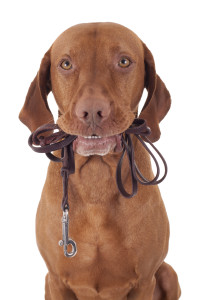 Many dog owners are unaware that pups are sensitive to stressful situations and often feel anxiety. Young and old dogs alike will exhibit indicators that they are in need of exercise and a routine to help alleviate their stress. Destructive behaviors such as accidents in the house, barking, chewing, and irritability may be signs that your dog requires more routine in his or her life.
Many dog owners are unaware that pups are sensitive to stressful situations and often feel anxiety. Young and old dogs alike will exhibit indicators that they are in need of exercise and a routine to help alleviate their stress. Destructive behaviors such as accidents in the house, barking, chewing, and irritability may be signs that your dog requires more routine in his or her life.
Early Training
Dogs enjoy having a purpose. In fact, many dog breeds were specifically bred to perform a job, such as hunting or herding other animals. As such, depending on the type of dog you have, your dog may feel anxiety or stress due to boredom or lack of having a “job” to do. A great way to help with this problem is to enroll your dog (and yourself!) in obedience classes. Working with your dog as a team to perform tricks and obey commands can help your overall communication and relationship. Training your furry friend also helps keep their mind sharp and healthy while also making them feel as if they are fulfilling a purpose.
Scheduled Dog Walks
For some people, going to the gym every day is how they relieve stress. Your dog may be exhibiting unruly behavior to communicate that they are in need of a similar exercise routine! Dogs are happiest when they have a regular routine with some variety mixed in, and one of the best ways to establish this is through scheduled walks and daily exercise. This can help your puppy stay consistently happy and healthy.
For pet owners who work during the day, scheduling a consistent walking or training routine may be difficult. Fortunately, at Walk! ATX, our experienced and caring trainers and dog walkers are able to keep your pet exercised and happy through our individualized programs specialized to meet your and your pup’s unique needs. Call us today at (512) 655-9557 for more information on the pet services we offer!
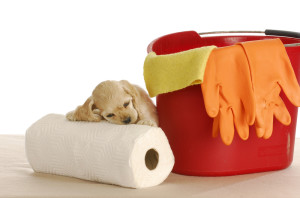 Bringing home your new puppy is exciting and fun, but potty training can put stress on your new relationship. It is important to begin potty training as soon as you bring your pup home and be consistent with your training. Potty training can be easy and quick when done properly, so here are a few tips for getting your pup house trained!
Bringing home your new puppy is exciting and fun, but potty training can put stress on your new relationship. It is important to begin potty training as soon as you bring your pup home and be consistent with your training. Potty training can be easy and quick when done properly, so here are a few tips for getting your pup house trained!
Establish a routine.
Routines are incredibly important for puppies. They need structure and repetition to be able to learn when it is time to sleep, eat, and potty. You’ll need to take your puppy outside frequently–they have tiny bladders! Every two hours is a good rule of thumb, but as they grown and learn, they won’t need to go out as frequently. After they go, reward them with some scratches, a treat, and love so they know that they did a good job.
Supervise at all times.
When your pup is inside, watch them like a hawk. If there is any sign that they might need to go, such as sniffing in circles, whining, or sitting at the door, take them out immediately. Don’t let them go in the house at all costs, and if you catch them in the act, interrupt them, go outside, and praise them if they finish outdoors.
Don’t get upset.
Mistakes are going to happen. Your pup is still a baby and needs time to learn. When, not if, they have accidents, don’t get upset. Don’t rub their nose in it, spank them, or use a harsh tone of voice or else they will only be afraid of you. Instead, clean it up well, take them out, and praise them for going outside.
Plan ahead.
If you know you are going to be gone for longer than your puppy can hold it, plan for someone else to take them out. Walk! ATX can help you in this situation and be there to take your pup outside so they can go when and where they need to. Call us today at (512) 655-9557 to learn more about the Austin dog walking and training services we offer and how we can help you get your puppy trained!
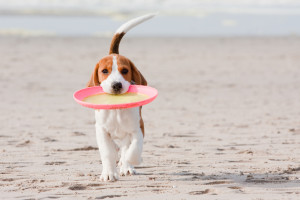
Your dog is your best friend and part of your family, so it is important to keep their mind and body as healthy as possible. From small Chihuahuas to Great Danes, our pups need consistent exercise to keep them in tip top shape. A quick way to determine how much exercise your dog needs is by their size or breed.
Hounds, Herding, and Sporting Dogs
These types of dogs are high energy breeds due to their original breeding purposes. These high intensity breeds need at least 60-90 minutes of exercise daily. It is even better for your dog if they could have this amount of play time twice a day. Not only will this keep your dog in shape, it will also keep them out of trouble. Since these breeds were meant for hard work, they can get bored easily and find ways to entertain themselves that are sometimes not the best–cue chewed up socks! Fortunately, this also means that they are intelligent and will enjoy working their brains through obedience training just as much as physical exercise!
Terriers and Toy Breeds
Terriers can range vastly in size, however they share the same bouncy and high energy traits. While they need a steady amount of exercise, the majority of terriers can get a substantial amount of their exercise while in the backyard. You should still be spending at least 60 minutes a day exercising your pup. Toy breeds can get their needed exercise in smaller spaces as well. Smaller dogs are often overlooked as needing exercise, putting them at risk of obesity and health problems later in life. Setting time aside to walk or play with your dog on a regular basis can help alleviate and prevent health problems.
Let Walk! ATX Help You
At Walk! ATX, we know that work and family can sometimes get in the way of giving your pup all the exercise he or she needs. Give us a call today at (512) 655-9557 and let us help you with our Austin dog walking and basic training services!
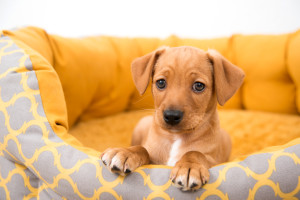 Bringing a new puppy home is sure to be one of the most exciting and most memorable days in your and your puppy’s relationship. However, there are some very important steps you need to take on this first day to get this relationship off on the right foot. Training begins the moment you bring the puppy into your home, so here are some important tips to keep in mind before and on this exciting first day!
Bringing a new puppy home is sure to be one of the most exciting and most memorable days in your and your puppy’s relationship. However, there are some very important steps you need to take on this first day to get this relationship off on the right foot. Training begins the moment you bring the puppy into your home, so here are some important tips to keep in mind before and on this exciting first day!
Before Your Puppy Comes Home
Before you bring your new puppy home, you want to set her up for success as much as possible. As such, you should make sure that your floor is free from anything potentially dangerous or enticing for your new puppy. Puppies love to explore and they do so by putting anything (and everything) in their mouths, so make sure that food, small items, shoes, and wires are cleared from the floor so that they are not tempted to chew on anything potentially harmful.
Additionally, you will want to set up a safe place for your puppy. This will be where her food and drink are kept and where her bedding and/or crate is kept. Many first time dog owners make the mistake of giving their new pet free run of the house. However, it’s best if you introduce your pup to your home in increments, and you should start off by just introducing her to just her own room or area. Some people mistakenly believe that this is mean to their pet, when in reality, it helps a puppy feel secure in their scary new home by giving them a place that is theirs and where they feel comfortable.
When Your Puppy Comes Home
When you bring your new puppy home, you should take him or her directly to the area that you set up for him or her. This is where you should feed him or her, give them treats, and play with them. It will help your puppy to feel like they have a safe space in the house. After your puppy has started to identify his or her room or area, you can start introducing them to the rest of your home. However, when you do, you should introduce them one room at a time. This helps to reinforce healthy boundaries and keeps your pup from thinking that the home is theirs. When introducing a dog to a new room in the home, don’t just let the dog run in at his or her own discretion. You should enter the room first and then invite him or her to come in by calling them to you. This let’s them know that you are in charge and that they are only allowed to explore places that they have permission to enter.
Get Training Help from Walk! ATX
Training a puppy is hard work, but fortunately, help is available. The experienced Austin dog walkers and dog trainers at Walk! ATX can help you make your pup’s transition to its new home a smooth one. Call us today at (512) 655-9557 to learn more about the services we offer and what we can do to help you with your new addition.
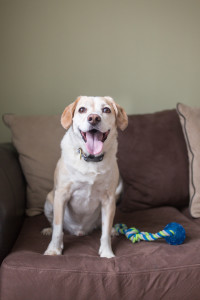 For some Austinites and their furry friends, the Texas heat becomes too much to handle in the summer, but exercising your pet is still an important daily task! Fortunately, there are a few clever ways to have fun without necessarily being in the hot sun.
For some Austinites and their furry friends, the Texas heat becomes too much to handle in the summer, but exercising your pet is still an important daily task! Fortunately, there are a few clever ways to have fun without necessarily being in the hot sun.
Use the Stairs
For those of you in apartment complexes or living in a multistory home, the stairs are a great way to keep your pup active. By running up and down the stairways, your pup gets to work less developed muscles. The change in elevation and obstacle-like challenge of the stair steps also helps to work your dog’s mind as well as his or her body.
Set up an Obstacle Course
Speaking of obstacle courses, set up hurdles for you and your active dog to have fun with! By using household objects, you can create a highly entertaining and challenging course for your dog to maneuver. If you have an old hula hoop lying around, help your dog learn to jump through it. Other obstacles could include laying out boxes or furniture for your dog to navigate through. The game challenges your dog mentally and physically, plus there is benefit of team bonding between you and your best friend.
Play Hide and Seek with Treats
While treats should always be given in moderation, sometimes our furry friends deserve a few extra indulgences, especially when they are earning them by working out! Hide your pet’s favorite snacks around the house, under rugs or behind furniture for your dog to hunt down during a scavenger hunt. They will be running around so excited to find their favorite foods that they will tire themselves out and have a great time while doing it! Dog toys, like Kongs, that dispense treats are also a good alternative.
Have Walk! ATX Lend a Hand
If your pup is active and needs constant exercise, give Walk! ATX a call at (512) 655-9557 to learn more about dog walking and house service options. We would love to work with you and your pup to find the best way to keep your dog happy and healthy!
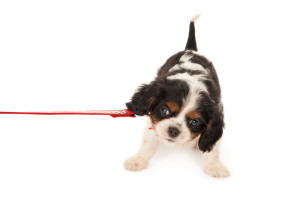 In a dog friendly city like Austin, Texas, we want to be able to bring our pets into public confident that they will behave appropriately. This is why etiquette training on the leash is such an important skill for a puppy or adult dog to have.
In a dog friendly city like Austin, Texas, we want to be able to bring our pets into public confident that they will behave appropriately. This is why etiquette training on the leash is such an important skill for a puppy or adult dog to have.
The command “heal” is one of the five basic commands that most dogs learn. However, precision healing takes a lot of consistent work to pay off. Most dogs are excitable and enjoy the outdoors. Some pets like to sprint ahead of their owners, pulling on their leashes while other dogs like to stop and sniff their surroundings every few steps. So how can these behaviors become curbed in favor of more publicly appropriate conduct?
Use an Award System
The most basic approach involves a lot of treats and awards for the dog. By using a short leash and an award system for not pulling every couple of steps, the dog associates walking next to their owner as a positive experience. Small, peanut sized treats are the most popular choice of reward since the dog can quickly enjoy them and continue to learn.
Walk at a Quick Pace
Some dogs can have low attention spans. When they walk more quickly, they are less distracted by the sights and smells around them and can better focus on their owner. This encourages the dog to listen to direction rather than sniffing around.
Final Note
Consistency is the most important element of leash training. It’s important that while a dog is learning to heal that all walks are considered an educational experience. These training walks should be taken frequently but for brief periods of time.
At Walk! ATX, we have experience working with all types of pups. If you are interested in leash etiquette training, give us a call today at (512) 655-9557 to learn more about our dog walking and basic training services!
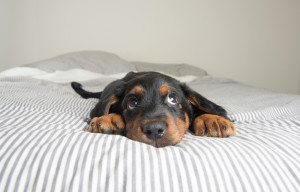 One significant difficulty you may face as a pet owner is figuring out what to do with your pets when you have to go out of town. While there are numerous boarding services available, this is not a great option for every dog. Many dogs become nervous when placed in an unfamiliar environment, experiencing everything from emotional distress to physical symptoms like gastrointestinal problems, or refusal to eat. Additionally, for older, sick, or injured dogs, the stress of a boarding facility and/or unknown environment can take a significant toll.
One significant difficulty you may face as a pet owner is figuring out what to do with your pets when you have to go out of town. While there are numerous boarding services available, this is not a great option for every dog. Many dogs become nervous when placed in an unfamiliar environment, experiencing everything from emotional distress to physical symptoms like gastrointestinal problems, or refusal to eat. Additionally, for older, sick, or injured dogs, the stress of a boarding facility and/or unknown environment can take a significant toll.
Fortunately, there are alternatives to boarding at an external facility, one of the most convenient of which is letting your dogs stay in the familiar comfort of their own home while you are away! With in-home pet sitting, a qualified and experienced pet sitter will come to your home regularly, making sure that your dogs are not only fed and walked, but that they are properly exercised and entertained. Your dogs are sure to feel more relaxed when able to stay at home, and you will have the added benefit of knowing that not only your dogs, but your home, is being looked after while your away.
At Walk! ATX, our pet sitters are dedicated to making sure that your pets and your home are properly looked after in your absence. As such, in addition to giving your dogs the love and attention they deserve, we will also rotate lights, clean linens, wash dishes, and water your plants so that everything is in proper order when you return from your trip. Call us today at (512) 655-9557 to learn more about our pet sitting services and what we can do for your pets.
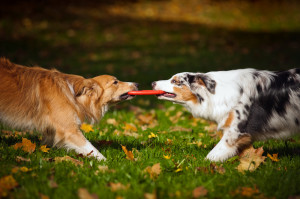 The best time to socialize any dog is when it’s a puppy and still receptive to new people and things. However, that’s not always possible, especially if you adopt / rescue your dog as an adult. Bringing an adult dog home can be a stressful experience if you aren’t sure what degree of socialization they have had up to that point. Fortunately, if you do find that your dog isn’t comfortable around others, there are steps you can take to socialize your adult dog.
The best time to socialize any dog is when it’s a puppy and still receptive to new people and things. However, that’s not always possible, especially if you adopt / rescue your dog as an adult. Bringing an adult dog home can be a stressful experience if you aren’t sure what degree of socialization they have had up to that point. Fortunately, if you do find that your dog isn’t comfortable around others, there are steps you can take to socialize your adult dog.
Take Daily Walks
By taking your dog for daily walks, you will help him or her get used to the presence of other people or animals. If you dog is reactive or unfriendly don’t force him or her to socialize. Instead, try and help your pup get used to the presence of others while walking. You can also help build positive associations by bringing treats with you on your walk. If your dog is reactive towards other dogs, give your dog treats as soon as you see another dog coming. However, only treat your dog if he or she is behaving and not barking or growling. As long as your dog behaves politely, continue to treat him or her until the dog passes. If you are consistent with this training, your dog will come to associate other dogs with rewards, and help him or her warm up to these other animals.
Walk Near Dog Parks
Taking your dog into a dog park might be too much if he or she was not socialized as a puppy, but walking your dog near the fence of a dog park is a good, safe first step. Your dog can get used to the sights, smells, and sounds of a dog park, and see other dogs interacting safely and politely, which could be a good eventual gateway for your dog to join in the fun.
Arrange Play Dates with Well-Behaved, Polite Dogs
If you have a friend or family member with a polite, well-behaved dog, you may want to arrange a play date to see how your dog gets along with others. Often times, it’s best to find an older dog that is non-reactive, who will be patient with your dog if he or she is poorly behaved. If you are really concerned about your dog’s reactions, you may want to consider muzzling your dog for the initial meeting.
At Walk! ATX, we have experience handling dogs of any socialization level, and can help provide you with specific advice tailored to help you socialize your puppy or adult dog. Learn more about the services we offer by calling us today at (512) 655-9557.
 Dogs are extremely social creatures, but that doesn’t mean that owners can assume that their dog will be comfortable around other people, animals, and even objects, without any additional assistance. The reality is that properly socializing a dog is an extremely important undertaking that all pet owners need to take seriously. While there are definitely things you can do to properly socialize an older dog, one of the easiest ways to socialize your pup is to do so while they’re still young and eager to learn! Here are just a few tips for things you should keep in mind when looking to properly socialize a young dog.
Dogs are extremely social creatures, but that doesn’t mean that owners can assume that their dog will be comfortable around other people, animals, and even objects, without any additional assistance. The reality is that properly socializing a dog is an extremely important undertaking that all pet owners need to take seriously. While there are definitely things you can do to properly socialize an older dog, one of the easiest ways to socialize your pup is to do so while they’re still young and eager to learn! Here are just a few tips for things you should keep in mind when looking to properly socialize a young dog.
Meeting Other Dogs
To help keep your pup happy and safe later on, it’s important to help your puppy meet a variety of dogs of various breeds, sizes, and temperaments so that they can become comfortable interacting with all different kinds of dogs. However, this does not mean just taking your puppy to any dog park and hoping for the best. You need to be extremely intentional with the dogs your dog meets early on, as you want to make sure that all meetings and interactions are healthy, positive ones that will breed trust in your dog. As such, you first need to make sure your dog, especially if he/she isn’t fully vaccinated, is only meeting fully vaccinated dogs. This can help prevent your pup from picking up a potentially deadly disease, like Parvo. Additionally, you want to make sure that the dogs your puppy meets early on are friendly and well-socialized themselves. If you have friends of family members with calm, well-mannered dogs that won’t overreact to a puppy that is overflowing with energy, that is a great place to start! Safe interactions with other well-socialized dogs will make positive associations in your pup, and will help train your dog how to act around other dogs!
Meeting Other People
Just because your pup loves you doesn’t mean that all people are immediately ok. In fact, dogs respond very differently to people based on age, height, gender, what they’re wearing, and their movements / interactions with the dog. As such, it’s very important for your young pup to meet as many new people as possible while they’re still young. However, just like meeting other dogs, this needs to be done intentionally. Make sure that your pup is comfortable meeting new people, and if he/she seems scared, don’t force it. Additionally, introducing your puppy to kids at a young age is very important, but make sure that the kids your puppy first meets are calm, and behave around your dog properly. Children that are running and screaming, or who aren’t gentle with your puppy, could end up creating more fear than comfort.
Meeting New, Scary Things
As strange as it may sound, it’s important to introduce your dog to “things” that it might come across in the course of its life, but that might not be part of its daily routine. Things like wheelchairs, crutches, skateboards, and bicycles are all things that your dog might encounter at one time or another, and so it’s a good idea to test your dog’s temperament around loud, potentially scary objects, and reward them with treats when they don’t react. This can make venturing into unknown situations in the future much more safe and calm for both you and your pup!
Here at Walk! ATX, we have experience helping dogs of all ages with proper socialization, and are happy to provide advice and instruction for both puppies and adult dogs that are in need of a little help. If you are looking to properly socialize your dog with people or other animals, give us a call and we’d be happy to help!
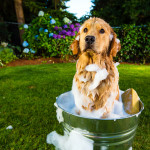 Regularly grooming your dog can have incredible benefits, both for you and your pet. Unfortunately, grooming your pup is rarely as easy of a task as you’d hope. However, whether you groom your dog yourself or you have a professional take care of this task, there are a handful of specific grooming habits you need to make sure to work into your schedule.
Regularly grooming your dog can have incredible benefits, both for you and your pet. Unfortunately, grooming your pup is rarely as easy of a task as you’d hope. However, whether you groom your dog yourself or you have a professional take care of this task, there are a handful of specific grooming habits you need to make sure to work into your schedule.
Bathing
With the exception of times when your dog needs a good bath after getting dirty, most dogs only need a bath every 2 – 4 months. Anything more frequent than that could dry out your pup’s skin and do damage to his or her fur. When you do give your dog a bath, make sure that you’re using shampoo that is designed specifically for dogs. Human shampoo can contain chemicals that are damaging to a dog’s skin and coat, so you want to make sure that you are picking a product that will help your dog’s coat look its best!
Brushing
Unlike bathing your dog, which should be done infrequently, brushing your dog frequently is a great way to keep their coat looking great. Brushing your dog will help remove dead hair, can reduce shedding indoors, and can help prevent your dog’s fur from matting, especially in medium and long-haired dogs. There are lots of different dog brushes you can use, including specialized brushes that are meant to help address problems like shedding, which can help to enhance the benefits that you’ll get from regularly brushing your dog.
Trimming Your Dog’s Feet
Your dog’s feet are the part of their body that is likely to get dirty fastest, which is why keeping their paws neat and trimmed is so important. If the fur around your dog’s paws grows too long, they are more likely to have mats in their fur, get foreign objects stuck in their fur, and drag dirt and other debris into your home.
Cleaning Your Dog’s Teeth
Not only will regular dental care help your dog’s teeth look great, but it can also prevent significant dental problems down the line, including gum disease, tooth decay, and tooth extraction. Additionally, regular dental care will keep your pup’s breath smelling great, too!